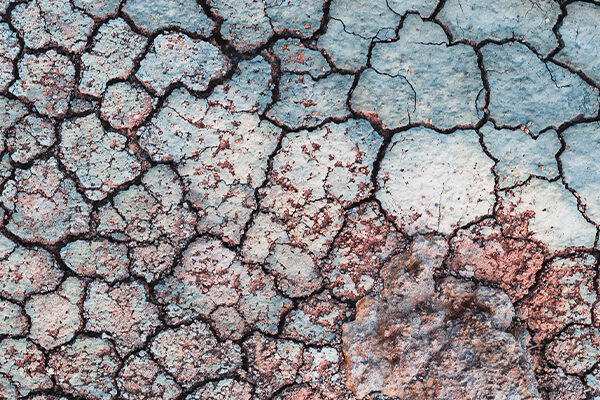
What is Asteatotic Eczema?
Asteatotic eczema is a type of eczema that results from extremely dry skin. The term “asteatotic” refers to the lack of fats or oils on the skin’s surface, which are essential for maintaining moisture. This condition often leads to inflamed, red, and scaly patches on the skin, causing significant discomfort.
Prevalence of Asteatotic Eczema
Asteatotic eczema is a prevalent condition, especially among the elderly population. Studies indicate that this condition affects approximately 1-3% of the general population. However, the prevalence increases significantly with age. Among individuals over the age of 65, the prevalence can be as high as 10-15%.
In a study conducted by the American Academy of Dermatology, it was found that this condition is more common in men than women, particularly in those aged 60 and above. The study also highlighted that individuals living in colder climates or areas with low humidity are at a higher risk of developing asteatotic eczema.
Asteatotic Eczema Causes
The causes of asteatotic eczema are multifaceted and can vary from person to person. Key factors contributing to this condition include:
Environmental Factors: Cold weather and low humidity levels can strip the skin of its natural moisture, leading to dryness and irritation.
- Age: As people age, their skin tends to become drier due to a decrease in natural oil production.
- Frequent Bathing: Over-washing or using harsh soaps can remove the protective oils from the skin, exacerbating dryness.
- Genetics: A family history of eczema or other skin conditions can increase the risk of developing this condition.
- Underlying Health Conditions: Conditions such as hypothyroidism and diabetes can also contribute to dry skin and subsequent eczema.
- Medications: Certain medications, such as diuretics and lipid-lowering agents, can contribute to dry skin and xerotic eczema.
Symptoms of Asteatotic Eczema
Recognizing the symptoms of winter itch is crucial for timely intervention. Common symptoms include:
- Dry, Flaky Skin: The skin appears rough and scaly, often with visible cracks.
- Itching: Intense itching is a hallmark of asteatotic eczema, leading to scratching that can further damage the skin.
- Redness and Inflammation: Affected areas may become red and swollen due to inflammation.
- Pain and Discomfort: The skin may feel tight and painful, especially in severe cases.
Diagnosing Asteatotic Eczema
Diagnosis of this condition typically involves a physical examination and a review of the patient’s medical history. Healthcare professionals including Dermatologists may also perform a skin biopsy to rule out other conditions with similar symptoms, such as psoriasis or fungal infections.
Treatment Options for Asteatotic Eczema
Managing winter itch involves a combination of lifestyle modifications and medical treatments. Here are some effective strategies:
1. Moisturizers and Emollients
Regularly applying moisturizers is essential to restore the skin’s moisture barrier. Look for products that contain ingredients like glycerin, ceramides, and hyaluronic acid. These substances help to retain moisture and soothe dry skin.
2. Avoiding Harsh Soaps
Using gentle, fragrance-free soaps and cleansers can prevent further irritation. Opt for products specifically formulated for sensitive skin.
3. Humidifiers
Using a humidifier at home can add moisture to the air, especially during the dry winter months. This can help keep the skin hydrated.
4. Bathing Practices
Limit baths and showers to 10-15 minutes and use lukewarm water instead of hot. Pat the skin dry with a soft towel and apply moisturizer immediately after bathing to lock in moisture.
5. Topical Steroids
In cases of severe xerotic eczema, dermatologists may prescribe topical corticosteroids to reduce inflammation and itching. These should be used under medical supervision to avoid potential side effects.
6. Oral Medications
For persistent and severe cases, oral medications such as antihistamines or immunosuppressants may be prescribed to manage symptoms.
Prevention Of Asteatotic Eczema
Prevention is key to managing winter itch effectively. Here are some tips to prevent flare-ups:
- Stay Hydrated: Drink plenty of water to keep the skin hydrated from within.
- Protect Your Skin: Wear gloves and protective clothing in cold weather to prevent exposure to harsh elements.
- Maintain a Healthy Diet: A balanced diet rich in omega-3 fatty acids, vitamins, and minerals can promote healthy skin.
- Monitor Indoor Humidity: Keep indoor humidity levels between 30-50% using a humidifier.
- Avoid Irritants: Identify and avoid personal triggers, such as certain fabrics, fragrances, or allergens.
In A Nutshell
This condition is a manageable condition with the right approach to skincare and lifestyle adjustments. By understanding the causes of Asteatotic Eczema and implementing effective treatment strategies, individuals can significantly improve their skin health and quality of life. Regular moisturizing, gentle skincare practices, and proactive measures to maintain skin hydration are essential steps in preventing and managing this condition.
For those experiencing severe symptoms, consulting a dermatologist is crucial to receive personalized treatment and guidance. With proper care and attention, the discomfort and appearance can be effectively minimized.





